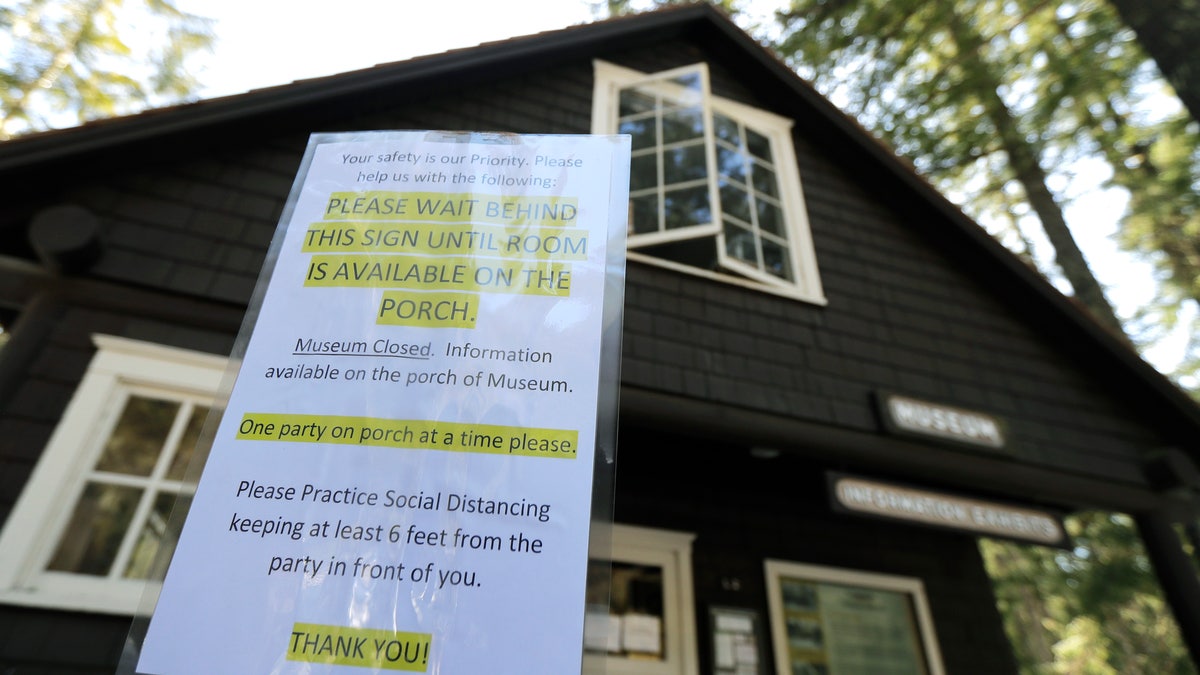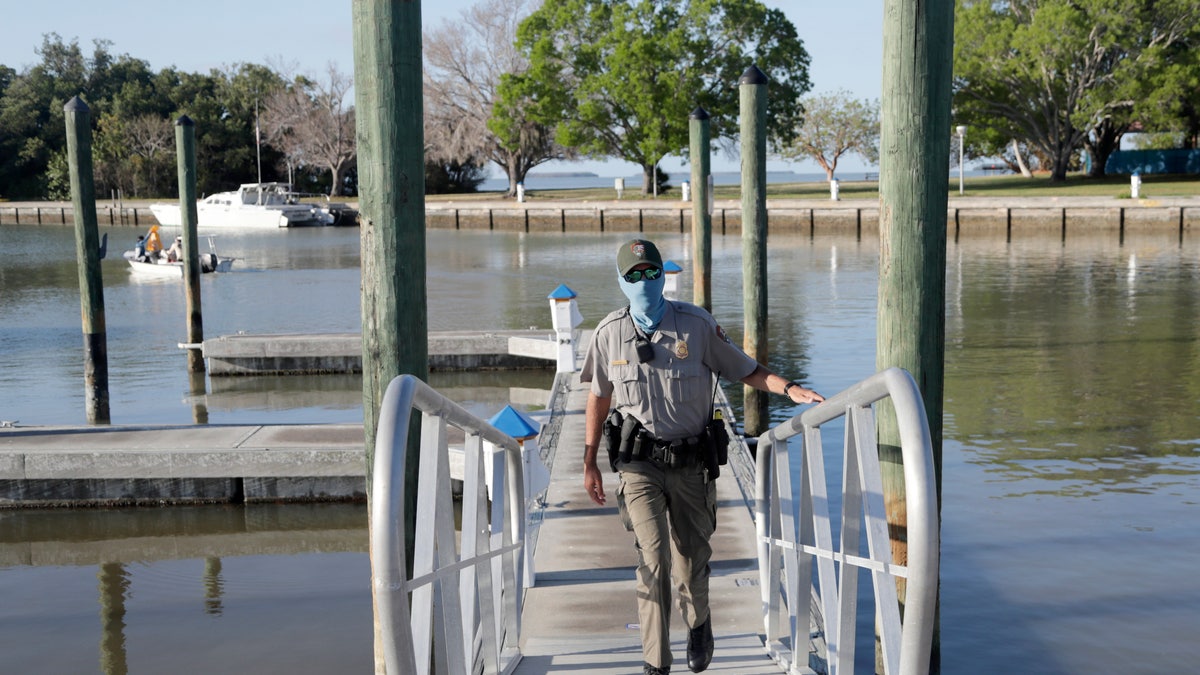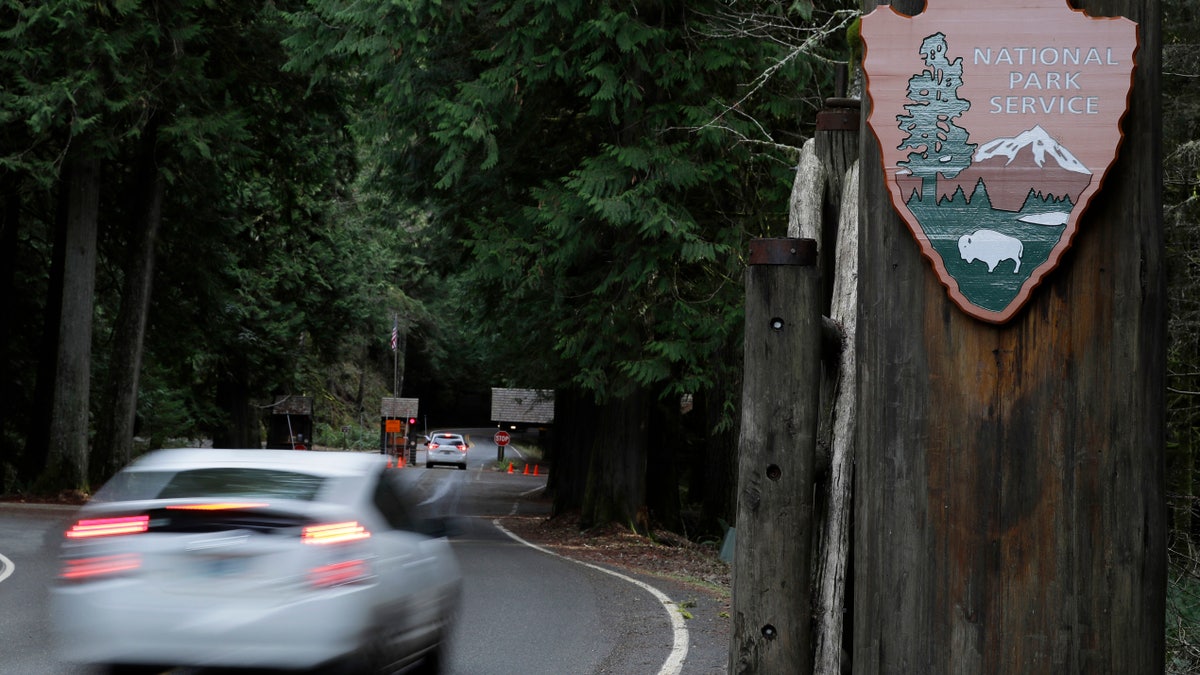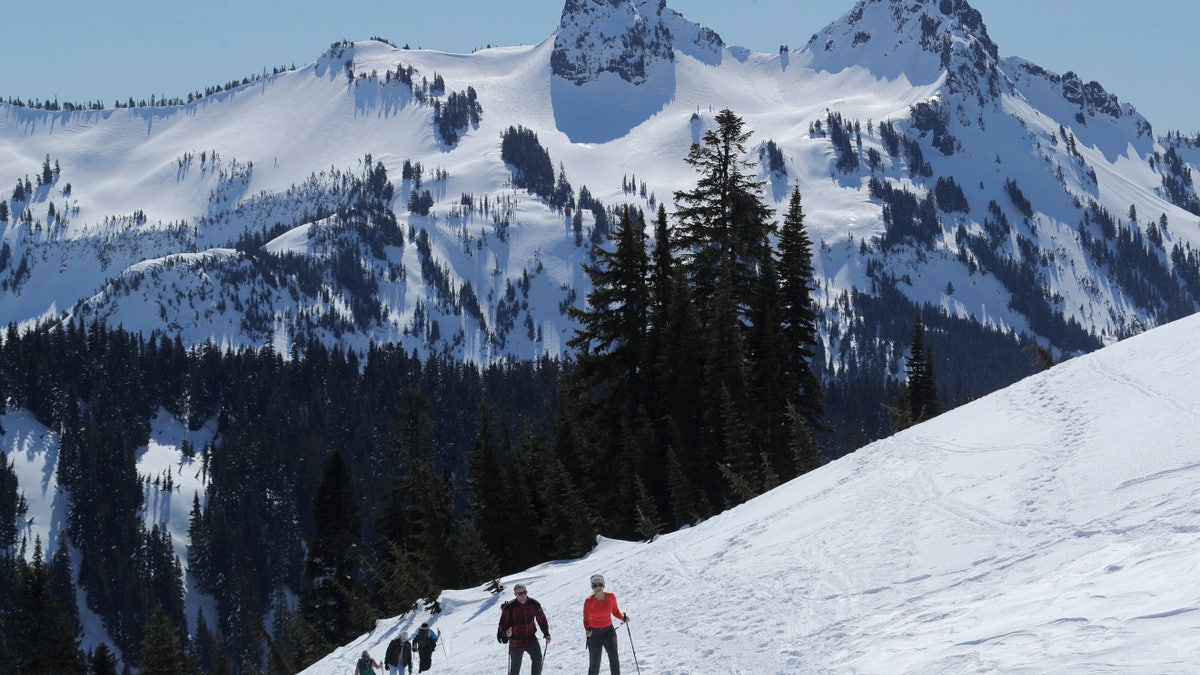Texas park ranger shoved into lake after warning group about social distancing
25-year-old Brandon Hicks has been arrested after he pushed a Texas park ranger into the water for breaking up the crowd.
Get all the latest news on coronavirus and more delivered daily to your inbox. Sign up here.
We’re not out of the woods just yet, but we’re getting there.
The National Park Service (NPS) is testing public access with limited reopenings across the country as the coronavirus pandemic continues. Select parks in South Dakota, Indiana, Nevada, Washington, Kentucky, California and Utah are once again welcoming visitors, albeit with restrictions and partial services.

In this March 18 photo, a sign in front of an information station and museum at Longmire in Mount Rainier National Park gives instructions for visitors to practice social distancing if they have questions for a park ranger working behind a window in Washington state. (AP Photo/Ted S. Warren, File)
On Sunday, The Associated Press reported that major parks across the country that are carefully beginning limited openings include the Badlands and Wind Cave national parks and Jewel Cave National Monument in South Dakota; Everglades National Park in Florida; Indiana Dunes National Park; Lake Mead National Recreation Area in Nevada; Mount Rainier National Park in Washington; Mammoth Cave National Park in Kentucky; Pinnacles National Park in California.
DRAMATIC VIDEO SHOWS CALIFORNIA HIKER BEING SAVED FROM WHIRLPOOL
In Utah, folks are welcome at Bryce Canyon and Capitol Reef, though visitor centers and campgrounds are largely closed.

Park Ranger Tyler Gagat wears a protective face mask as he monitors activity at the Flamingo boat ramp during the new coronavirus pandemic in Everglades National Park in Florida, on May 4, as the park gradually reopens to the public in phases. (AP Photo/Lynne Sladky, File)
“I felt like they did it right here because if they opened all the services, I think it would have been too much. Too many people would hit it,” Bryce Canyon visitor Donna Sullivan, of Sedona, Ariz. told The Salt Lake Tribune last week.
Though Sullivan was able to socially distance, the park will likely see larger crowds, as word spreads and entry fees are waived.
“This experiment, this limited reopening is really a cooperative effort between us and the public. It’s not possible to reap the full benefits of the mitigations we put in place if people aren’t aware of them and helping us to enforce them,” Bryce Park Ranger Peter Densmore explained.
FOLLOW US ON FACEBOOK FOR MORE FOX LIFESTYLE NEWS
Amid the ongoing outbreak, one official emphasized that parkgoers should prepare for a “new normal” that will likely look different from their last trip to an NPS site.

After closing amid the coronavirus pandemic, Mount Rainier National Park in Washington is one of many national parks testing public access across the nation. (AP Photo/Ted S. Warren, File)
“You may have facilities that aren’t going to be available, but the (park’s) footprint will be. So it will be a different visitor experience, and it will be a different normal that we’re going to need to own and, frankly, mitigate,” acting Park Service Director David Vela said on Friday.
CLICK HERE TO SIGN UP FOR OUR LIFESTYLE NEWSLETTER
“This gets to the value and importance of making sure that visitors know what to expect when they get to the park, making sure that visitors go to the park’s website (and) social media ... as to what is accessible, how to plan your trip, and, most importantly, what are the expectations when you get there.”

In this March 18 photo,, snowshoers head up a slope above Paradise at Mount Rainier National Park in Washington state. (AP Photo/Ted S. Warren, File)
According to the AP, the national parks that are operating with modified service are staffing up and will expand access are more employees are in place to patrol trails and roads, run visitor centers and more. The reopening process will take time; for example, in Utah, seasonal employees from out of state must quarantine for 14 days before reporting for duty.
Some, however, feel the NPS is moving too fast and beg for caution.
“We are also eager to get Americans back into our national parks. But it is too soon,” said Phil Francis, a retired superintendent who runs The Coalition to Protect America’s National Parks. “Parks absolutely should not open until the safety of National Park Service employees, concession employees, volunteers and other partners, including those who work and live in gateway communities, can be ensured.”
Francis said that most park staffers will be in contact with visitors as the parks gradually reopen, and that many of the employees live on-site, in close quarters, in government-owned housing. An NPS document detailed that parks should estimate that up to 40 percent of the total staff at the park may require isolation, while 4 percent may require hospitalization, The Associated Press reports.

In this March 23 photo, a woman removes items before the Las Vegas Boat Harbor closes at the Lake Mead National Recreation Area near Boulder City, Nev. (AP Photo/John Locher, File)
With that being said, iconic national parks including Yellowstone National Park, Grand Canyon National Park and the Washington Monument remain closed due to public health concerns amid the coronavirus crisis.
In March, Secretary of the Interior David Bernhardt temporarily suspended all park entrance fees to make it easier for Americans to get outdoors, where deemed acceptably safe. The decision is effective until further notice.
CLICK HERE FOR FOX NEWS' CONTINUING CORONAVIRUS COVERAGE
When visiting, the park service continues to urge visitors to heed social distancing and pack-out policies, among other measures, to safely recreate during this time.
If planning a visit during the outbreak, the NPS asks that visitors check with individual parks regarding operations and hours.
More information about the the park service’s response to the COVID-19 outbreak is avaliable on its website.
The Associated Press contributed to this report.
